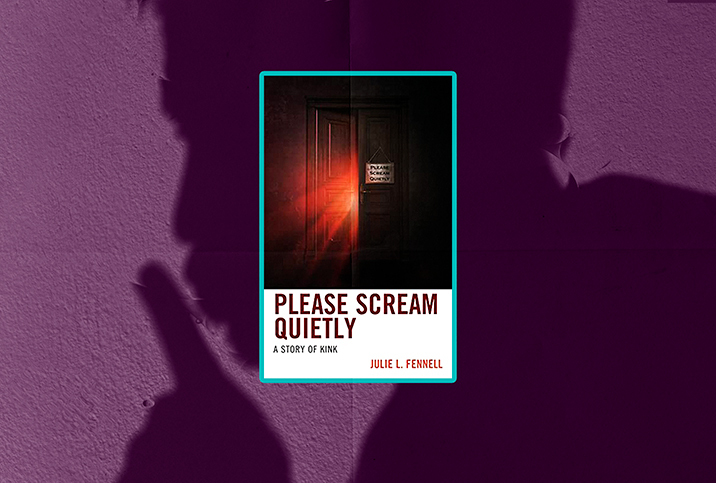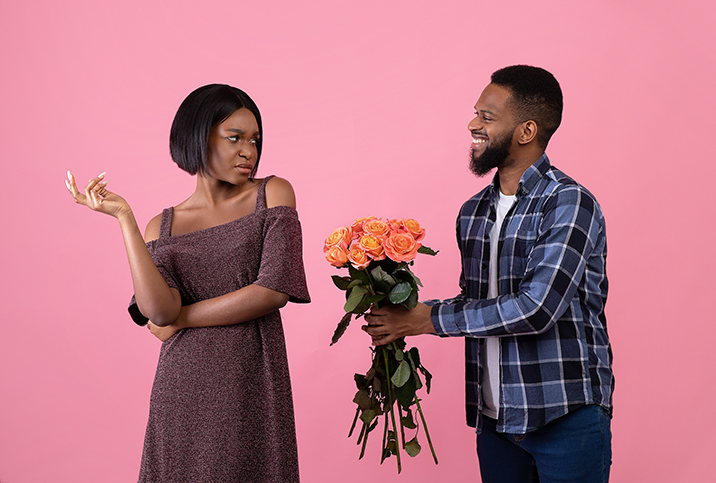Between the Pages: 'When Sex Hurts' Addresses Pain During Intercourse

Many women think they're the only ones suffering from pain during sexual intercourse. Not only that, but it's a difficult topic to talk about. Author Jill Krapf, M.D., hopes her new book, "When Sex Hurts: Understanding and Healing Pelvic Pain," can help patients realize they're not alone in their condition and there are strategies that can help.
In actuality, millions of people experience pelvic pain. An estimated 16 percent of women suffer from chronic vulvar pain—long-term pain or discomfort around the outer female genitals—which can severely affect daily lives.
Krapf is an OB-GYN practicing in Washington, D.C. She co-wrote the newly revised and updated edition of "When Sex Hurts" with three other experts in the fields of gynecology, sexuality research and sexual medicine: Andrew Goldstein, M.D., Caroline Pukall, Ph.D., and Irwin Goldstein, M.D.
In this Giddy exclusive, Krapf discussed the most common causes of vulvar pain in women, misconceptions surrounding pelvic pain, the most effective treatment options and more.
Editor's note: This interview has been edited for length and clarity.
What's your background with sexual health and how did it lead you to co-write this book?
Krapf: I'm board-certified in obstetrics and gynecology. At the very end of my training, I had the mentorship of a world expert in sexual pain conditions, Andrew Goldstein, M.D., one of the authors of the book. I spent an entire year with him learning about female sexual dysfunction and menopause, as well as vulvovaginal concerns.
After, I started the Center for Sexual Health at George Washington University as a junior faculty member. I ran that center for about five years and then I practiced at a couple of other places and joined Andrew Goldstein's practice, the person who originally mentored me, which is the Center for Vulvovaginal Disorders. We have a Washington, D.C., practice, where I am. We also have an office in New York. Dr. Goldstein is mainly in New York. We see patients with vulvovaginal pain and skin conditions, anything that involves the vagina, the genito-pelvic area we specialize in. We also do research in that area as well.
I also worked a long time in Canada with Caroline Pukall, Ph.D., and Irwin Goldstein, M.D. [Irwin] Goldstein is considered pretty much the grandfather of sexual dysfunction. He has a practice in San Diego. I've worked with them before on a textbook. "When Sex Hurts" was great because it was such a different type of writing. I'm used to medical writing, textbook writing, as well as research, so this was a unique challenge to really boiling down everything to an understandable way of explaining these complex topics.
What are a few of the key updates in this new edition?
The first edition of the book was published in 2011. We were inspired to update this because so much research has happened in the past 12 years. Our understanding of chronic vulvar pain has evolved in that time. The book is almost 80 percent new content. Everything was completely rewritten for the most part, reflecting the change in our understanding and the research that is now out there. A number of chapters have really expanded.
For example, Chapter 8 is on generalized vulvodynia, genito-pelvic dysesthesia and pudendal neuralgia. We're now learning that a lot of generalized vulvodynia may be related to neuralgia or nerve issues. These are originating from the pudendal nerve, and some of them are originating from the lower spine. All of that is really novel. That chapter was mostly new information and very exciting.
Some of the other chapters that have been updated are our understanding of the vaginal microbiome. When it comes to chronic vulvovaginal infections, there's been a lot of research in that area, as well as inflammation. Our understanding of inflammation has completely evolved.
The chapter on the clitoris is completely new as well. Now, we really understand the clitoris much more as far as what's under the surface, not just the glans clitoris, but the body of the clitoris and the nerve innervation of the clitoris and how that works, as well as structural changes that can cause clitoral pain.
There are more than 20 causes of genito-pelvic pain. Which do you find to be the most common?
I think the most important thing to understand is it's not usually just one cause. Usually, it's multiple causes at play. The most common cause that we see in all age groups is hormonally associated vestibulodynia. Basically, that is pain at the vaginal opening, pain with insertion, related to a lack of hormone at the glans that produces our natural lubrication.
We see this in women who are menopausal and we call it the genitourinary syndrome of menopause. We also see it in young people who are on certain medications that decrease estrogen and testosterone. That's one of the more common causes of pain with intercourse.
Another cause we often see is pelvic floor dysfunction. We see a lot of what we call hypertonicity or overactivity of the pelvic floor muscles. Essentially there are two types. This causes pain with insertion, pain with intercourse, as well as bowel and bladder symptoms. It can even be connected to lower back pain. It's even linked to jaw-clenching.
What is vulvodynia and what are some of the most effective treatment options for it?
Vulvodynia refers to vulvar pain of undetermined cause that lasts for at least three months. However, it may have associated factors. That's where we are with the definition as far as the guidelines go. We know there are causes to all pain, and so the issue here is really delineating what the causes are.
General causes can be hormonal. They can be muscular. They can be related to inflammation or they can be related to nerves. And so the diagnoses come out of conducting a history and a full physical exam. But essentially, they can usually fit into one of those four buckets of cause.
When we're looking at treatment, we really want to focus on the cause of the vulvar pain. For example, if the pain is related to tight pelvic floor muscles, then our treatment would be something like pelvic floor physical therapy, releasing and lengthening those muscles. If the cause was hormonal, for example, then treatment may be to address if someone is in menopause, then local low-dose hormonal treatments that can be really helpful. If someone is on a medication that's leading to this, talk about other treatment options and replenish the area with local low-dose hormone.
Inflammation can be either internal or external, so we can see autoimmune skin conditions that cause inflammation within the bottom layer of the skin. These are things such as lichen sclerosus or lichen planus. These skin conditions are often managed with a topical steroid that decreases the inflammation in the skin when used in the proper way and then allows the skin to regenerate and heal in a healthier way to decrease symptoms. Then if it's nerve-related, we want to obviously identify what nerves are involved, and then there are ways to calm down those nerves or to decrease the pain symptoms through either oral medications or a local nerve block, or physical therapy to release muscles and help with the nerves.
What is a common myth surrounding pelvic pain that you'd like to dispel?
I would say the largest one is that there's no cause of vulvodynia or chronic vulvar pain. I believe everything has a cause based on how the body works. We may not be there in the research, and some of these potential associated factors may not have a lot of research behind them or may not be commonly accepted, but I think we will get there.
Someday there will not be vulvodynia as a diagnosis or a term. We'll just know the causes of chronic vulvar pain and there will be specific diagnoses based on each cause. There are causes and treatment options for chronic vulvar pain, and I think this book does a really good job going through those potential causes and uses real cases to illustrate what this looks like for different people.


















